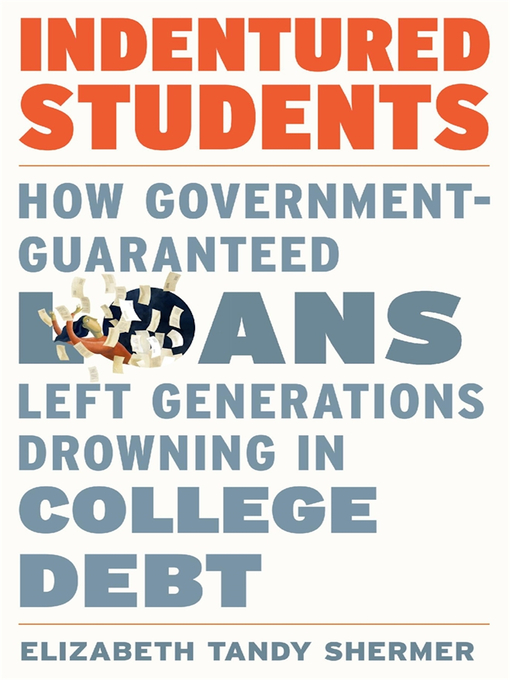The untold history of how America's student-loan program turned the pursuit of higher education into a pathway to poverty.
It didn't always take thirty years to pay off the cost of a bachelor's degree. Elizabeth Tandy Shermer untangles the history that brought us here and discovers that the story of skyrocketing college debt is not merely one of good intentions gone wrong. In fact, the federal student loan program was never supposed to make college affordable.
The earliest federal proposals for college affordability sought to replace tuition with taxpayer funding of institutions. But Southern whites feared that lower costs would undermine segregation, Catholic colleges objected to state support of secular institutions, professors worried that federal dollars would come with regulations hindering academic freedom, and elite-university presidents recoiled at the idea of mass higher education. Cold War congressional fights eventually made access more important than affordability. Rather than freeing colleges from their dependence on tuition, the government created a loan instrument that made college accessible in the short term but even costlier in the long term by charging an interest penalty only to needy students. In the mid-1960s, as bankers wavered over the prospect of uncollected debt, Congress backstopped the loans, provoking runaway inflation in college tuition and resulting in immense lender profits.
Today 45 million Americans owe more than $1.5 trillion in college debt, with the burdens falling disproportionately on borrowers of color, particularly women. Reformers, meanwhile, have been frustrated by colleges and lenders too rich and powerful to contain. Indentured Students makes clear that these are not unforeseen consequences. The federal student loan system is working as designed.
-
Creators
-
Publisher
-
Release date
August 3, 2021 -
Formats
-
Kindle Book
-
OverDrive Read
- ISBN: 9780674269804
-
EPUB ebook
- ISBN: 9780674269804
- File size: 14895 KB
-
-
Languages
- English
-
Reviews
-
Publisher's Weekly
June 21, 2021
The roots of the student debt crisis are explored in this comprehensive study by Loyola University history professor Shermer (Sunbelt Capitalism). She traces the history of college tuition financing from the 1862 passage of the Land-Grant College Act, which provided federal funding for at least one college in every state, through debates over the GI Bill, which offered free college tuition to veterans returning from WWII. The Johnson administration’s Higher Education Act of 1965 introduced federal guarantees for student loans bankrolled by private lenders, which were initially required to be paid back in 10 years, but neoliberal policies in the decades that followed slashed federal funding for higher education, resulting in tuition hikes and, in turn, more and more expensive student loans. Shermer astutely analyzes the myriad forces, including political pressure to protect states’ rights, professors’ concerns about government interference, and the rise of for-profit institutions such as the University of Phoenix, that have contributed to the state of affairs as of 2020, when 45 million Americans owed a collective $1.6 trillion in student debt, and argues that some form of free college is necessary to solve the problem. Though dense and scholarly, this well-researched history provides crucial context for understanding a thorny social problem.
-
Formats
- Kindle Book
- OverDrive Read
- EPUB ebook
subjects
Languages
- English
Loading
Why is availability limited?
×Availability can change throughout the month based on the library's budget. You can still place a hold on the title, and your hold will be automatically filled as soon as the title is available again.
The Kindle Book format for this title is not supported on:
×Read-along ebook
×The OverDrive Read format of this ebook has professional narration that plays while you read in your browser. Learn more here.

